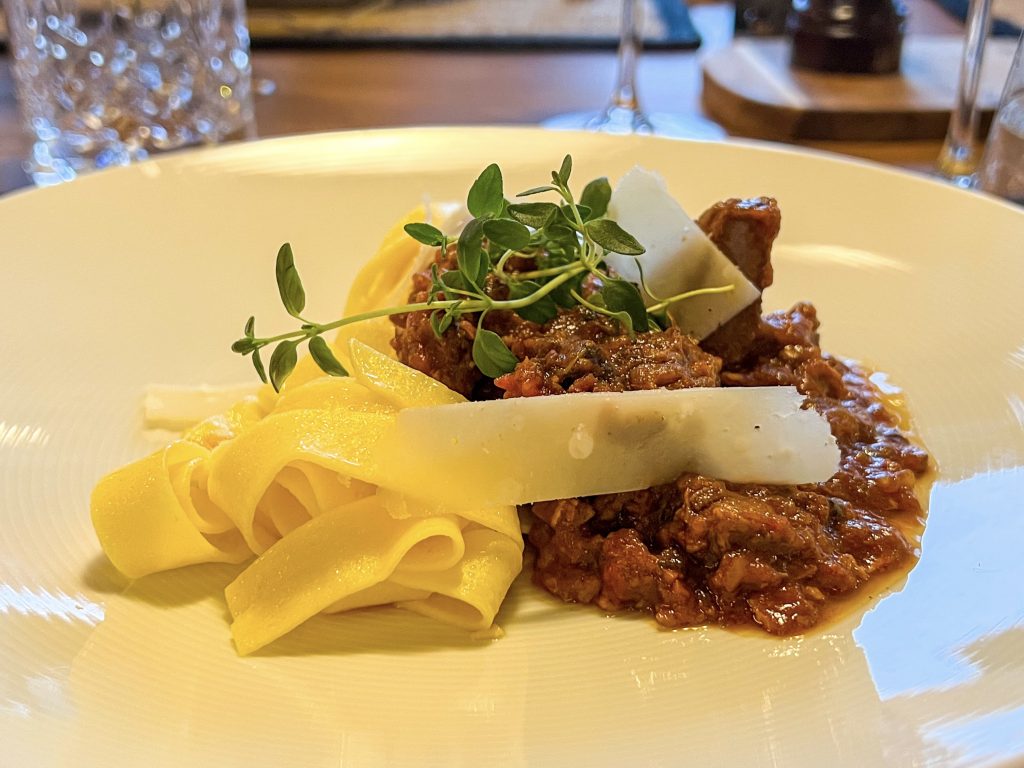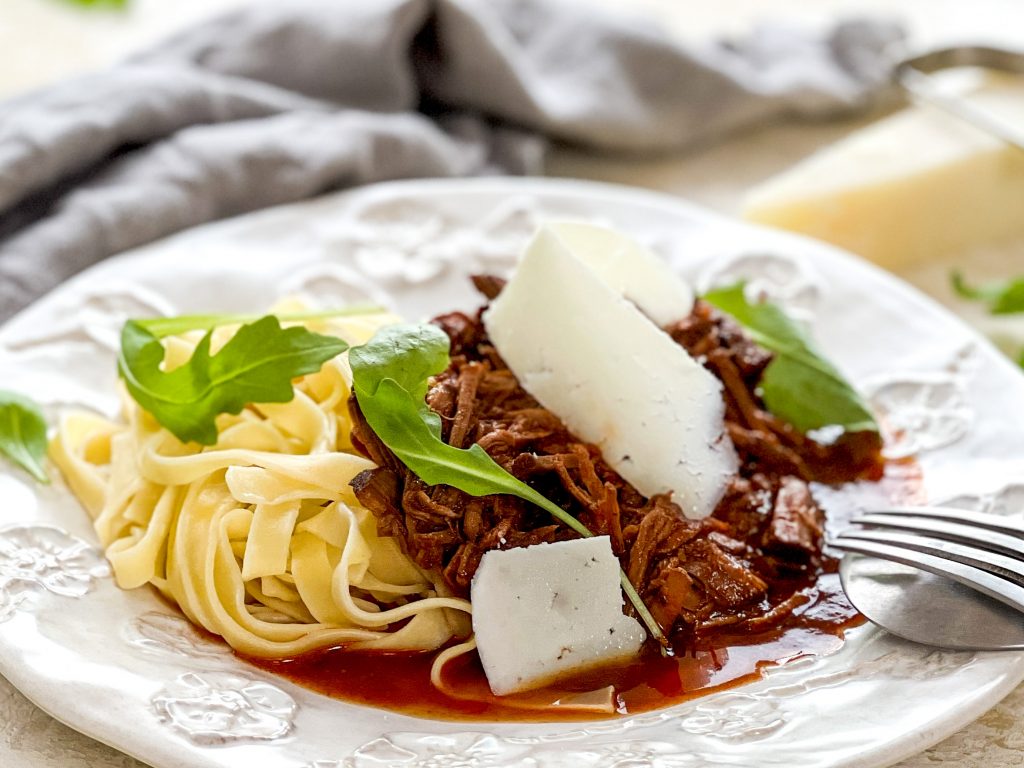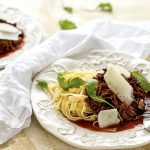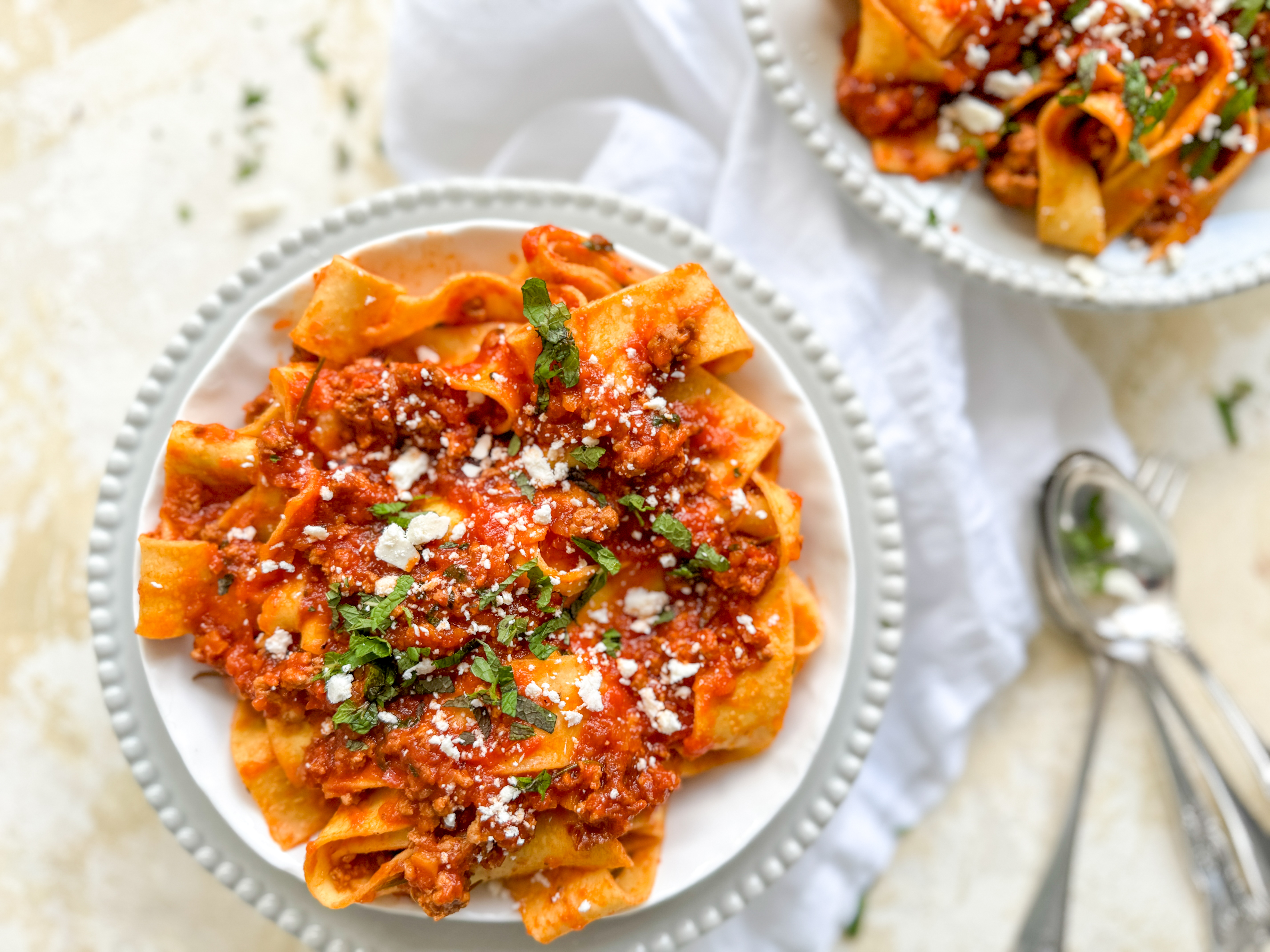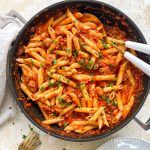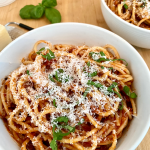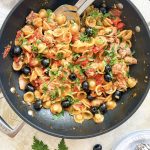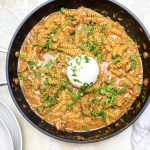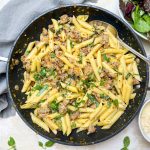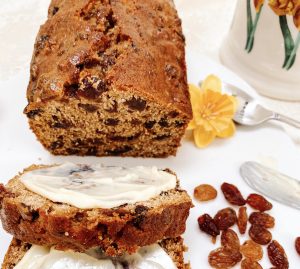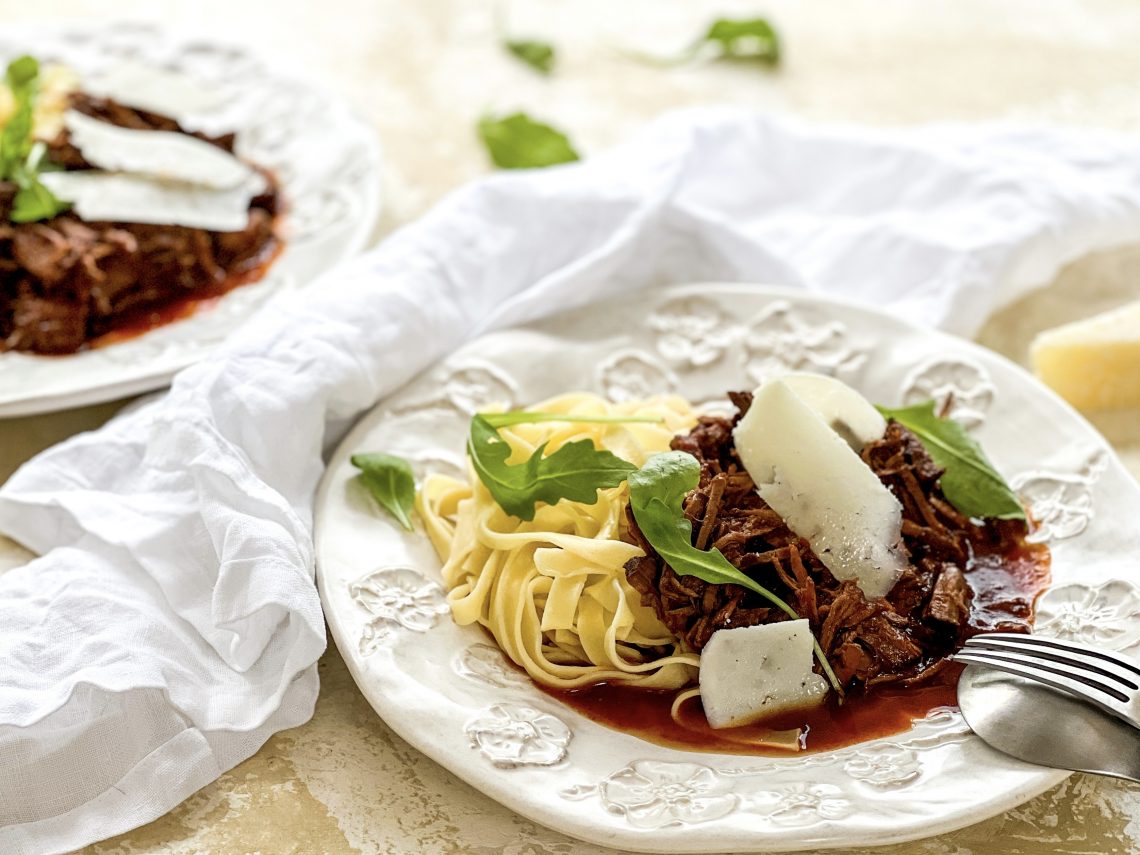
Beef Brisket Ragù
Ragù – an intensely rich and flavourful meat, tomato and red wine sauce, originating in Italy, and typically served with pasta and parmesan cheese. There are many different ragù recipes in Italy and they vary by name, location and ingredients. The common factor is that they all contain meat! Bolognese, from Bologna, is perhaps the most well known meat sauce served with pasta in the UK.
This ragù is made with beef brisket and is cooked over a long period of time to both tenderise the beef and intensify the flavour. I have been making this Donna Hay recipe for years: warm and comforting, and perfect if you want to prepare in advance, this fabulous pasta sauce is as ideal for a family meal, as it is for supper with friends. Serve with a thick pasta, such as rigatoni, pappardelle, tagliatelle, and, perhaps, some garlic bread and a salad on the side. Donna Hay recommends Caserecci – a rustic, rolled pasta. I also LOVE it with creamy, cheesy polenta.
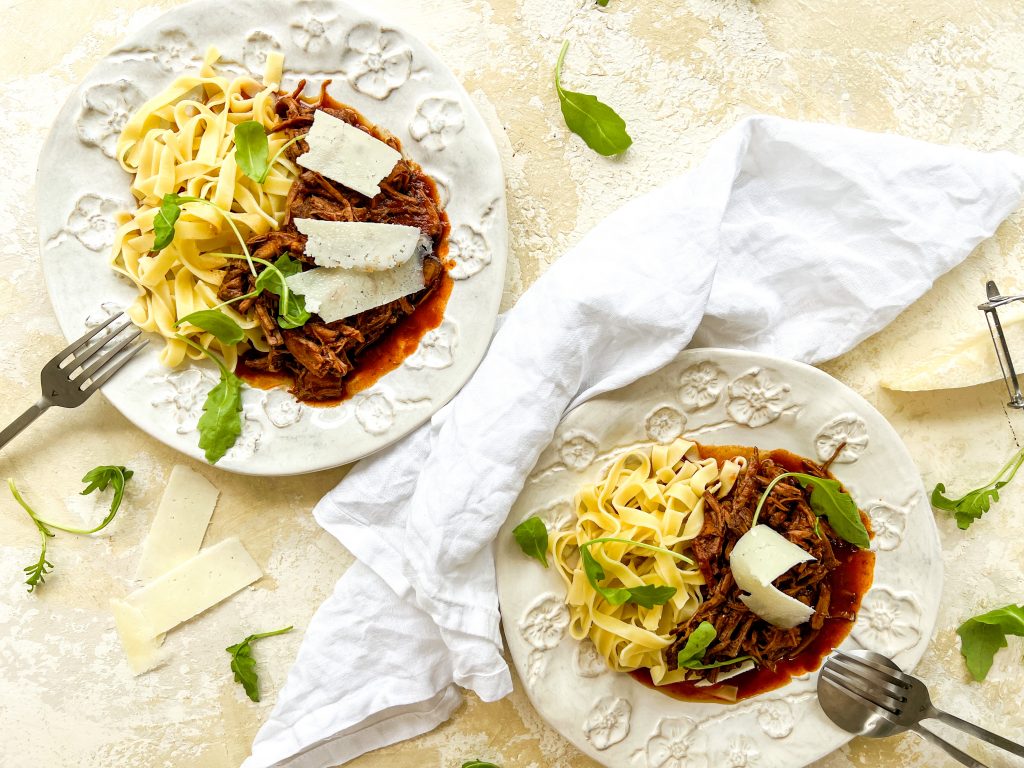
Lyngen Lodge
Although I have been making this ragù for many years, I made it on this occasion, to photograph for a suite of recipes I am collecting following our amazing trip to Lyngen Lodge, last April. A similar ragù was served on the final evening of this fabulous trip. The chef made his with star anise infused into the sauce. This recipe does not include star anise, but should you wish to be authentic to Lyngen Lodge, add 1 or 2 whole star anise to the sauce before cooking in the oven. Ensure they are removed before serving.
How to make Beef Brisket Ragù
Collect all your ingredients together:
For the ragù:
- olive oil
- beef brisket
- onion – peeled and chopped
- garlic cloves – peeled and finely chopped
- carrot – washed, trimmed and chopped. No need to peel.
- rosemary sprigs
- bay leaves
- red wine
- beef stock
- tin chopped tomatoes
- water from swilling out the tin from the tomatoes
- tomato purée
- red wine vinegar
- sugar, optional
- fine salt, or to taste
- freshly ground black pepper
To serve:
- thick pasta e.g. rigatoni, pappardelle, tagliatelle or creamy polenta. Donna Hay recommends Caserecci – a rustic, rolled pasta
- fresh chopped rosemary, basil leaves or rocket leaves
- slivers/grated parmesan cheese
- green salad
- fresh/garlic bread
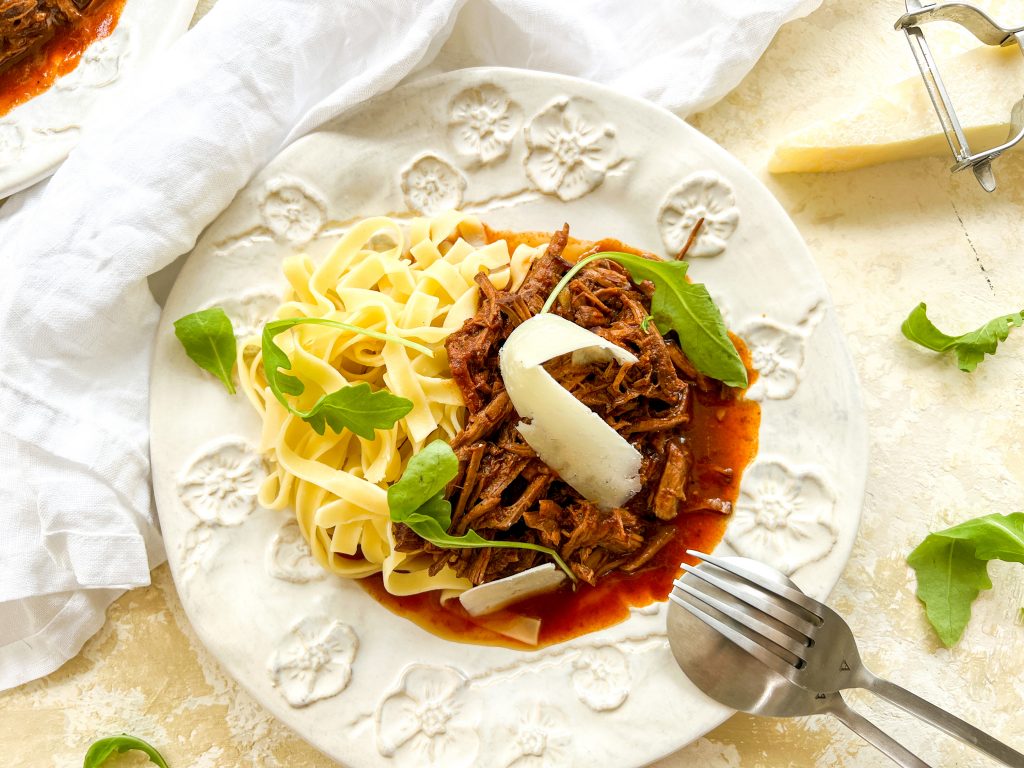
How to make this wonderful pasta sauce:
- Slice the brisket of beef into 3 pieces and season with salt and pepper on both sides of each piece.
- Heat 1½ tablespoons oil in the casserole dish, over a moderate to high heat. Brown the beef on all sides. This will take 3 or 4 minutes on each side. (You may need to do this in batches.)
- Remove the beef from the pan and set aside.
- The base of your pan should be brown and caramelised. This should come off when you cook the vegetables and add the wine. It adds amazing flavour.
- Prepare the vegetables –
- onion – peeled and chopped.
- carrot – washed, trimmed and chopped. No need to peel.
- garlic – peeled and roughly chopped.
- Add the remaining 1½ tablespoons olive oil to the pan, together with the onion, garlic, carrot and rosemary. Cook for 5-10 minutes, stirring regularly, until softened, lightly browned and slightly caramelised. Scrape up and incorporate all the sticky bits left in the bottom of the pan.
- Add the wine, bring to the boil and reduce to at least half, continuing to scrape up any sticky bits.
- Add the stock, tomato purée, tin of tomatoes and red wine vinegar. Bring to a simmer and add the beef back to the pan. Make sure as much of it as possible is covered by the liquid.
- Transfer to the oven and cook for 2½ – 3 hours, turning the beef half way through cooking. The beef should now be very tender.
- Remove the beef from the pan and shred with two forks.
- Meanwhile strain the sauce and taste to adjust seasoning. Skim off any fat which rises to the surface.
- Return the beef to the pan and re-heat. If the sauce has too much liquid, simmer, with the lid off, to reduce until you get the consistency you are looking for.
- Serve with a thick pasta, such as rigatoni, or some creamy polenta, and sprinkle with some fresh chopped rosemary and parmesan cheese
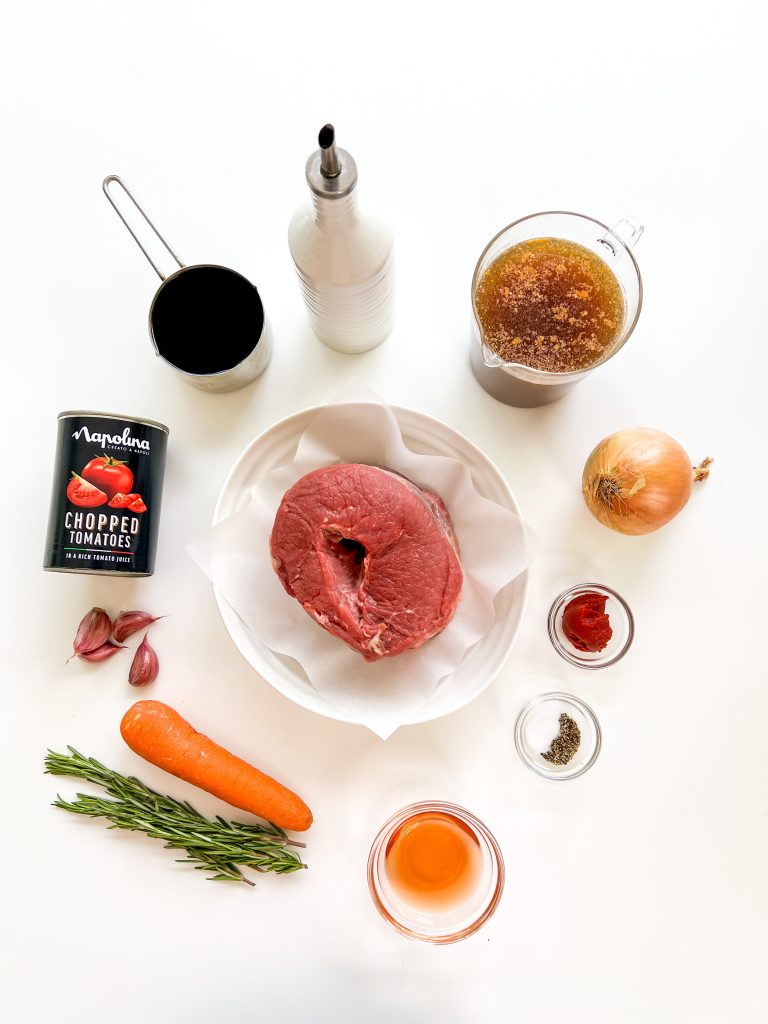
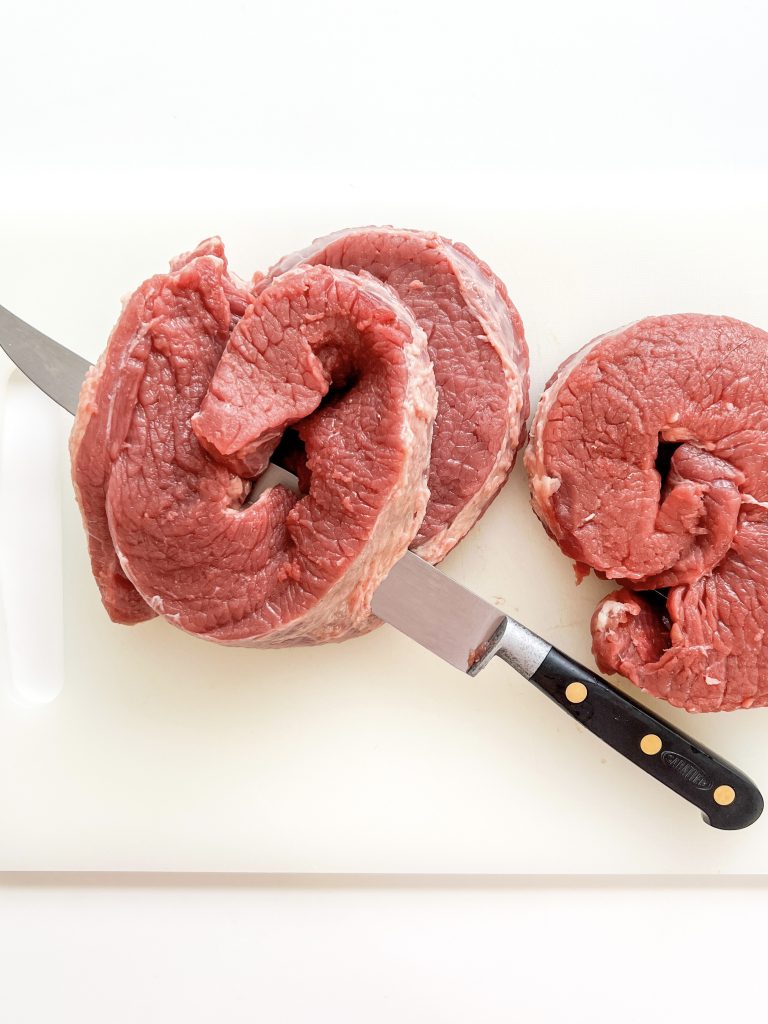
1 Slice, season 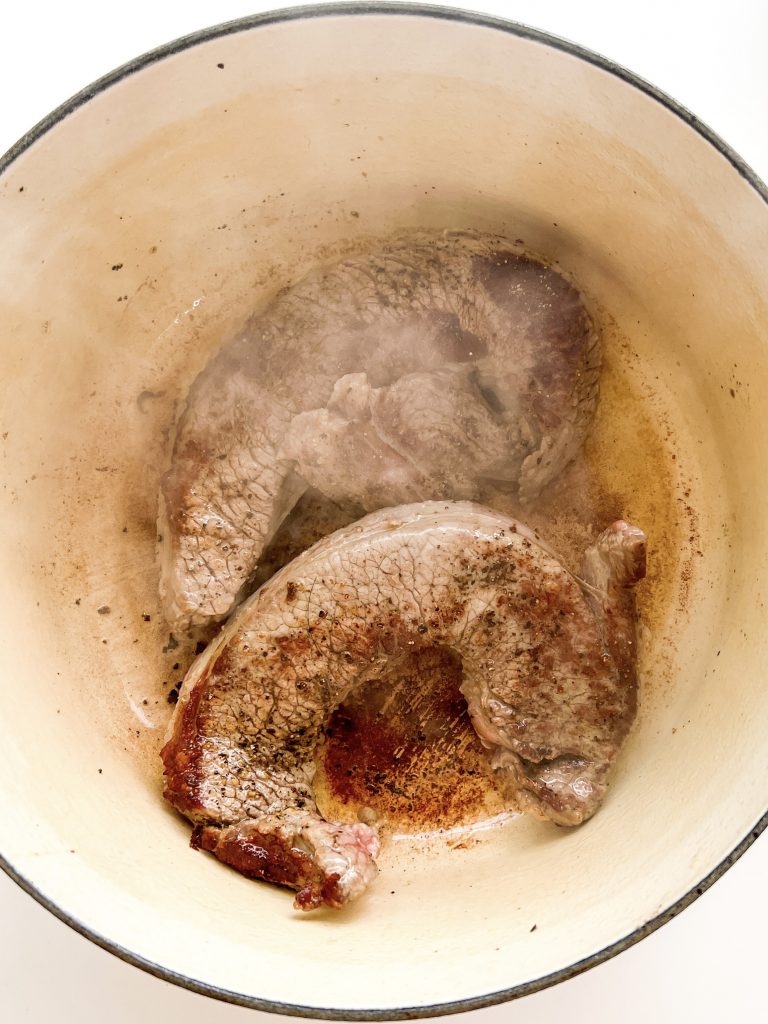
2 Brown the beef 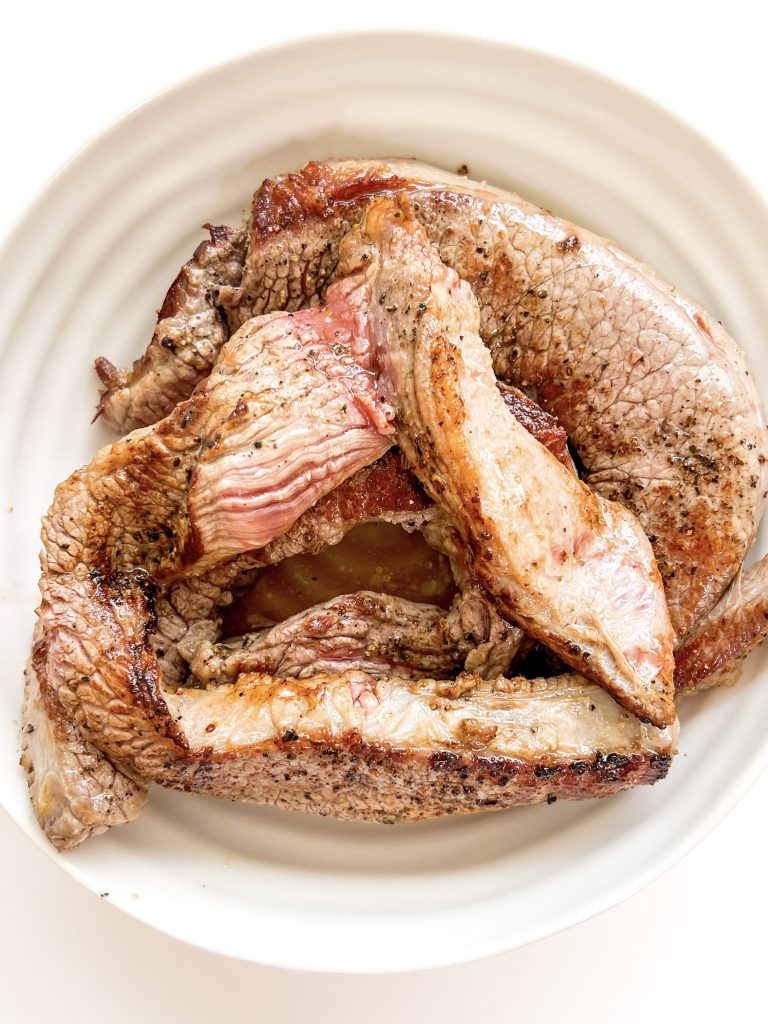
3 Set aside 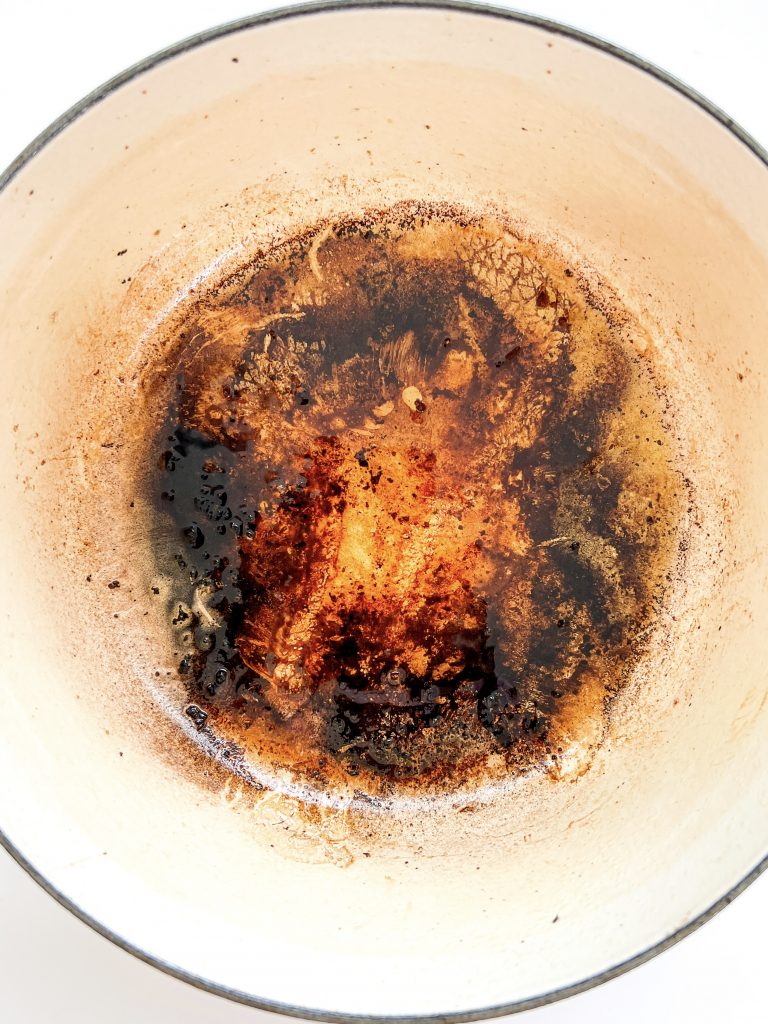
4 Caramelised pan 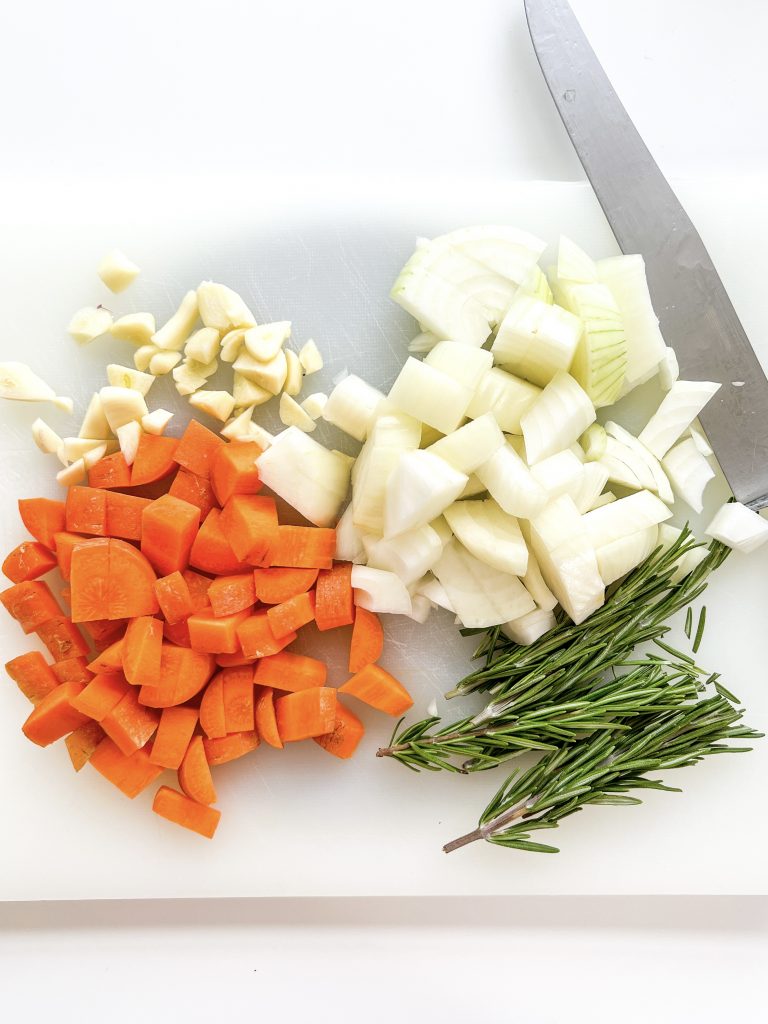
5 Prepare vegetables 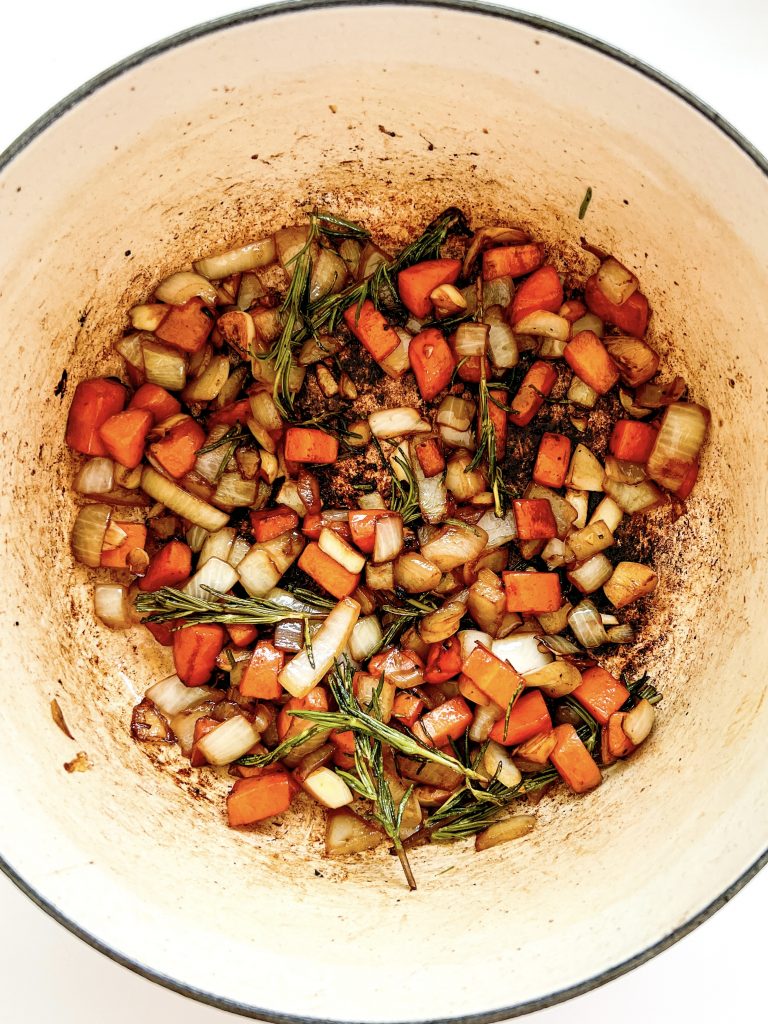
6 Cook vegetables 5-10 mins 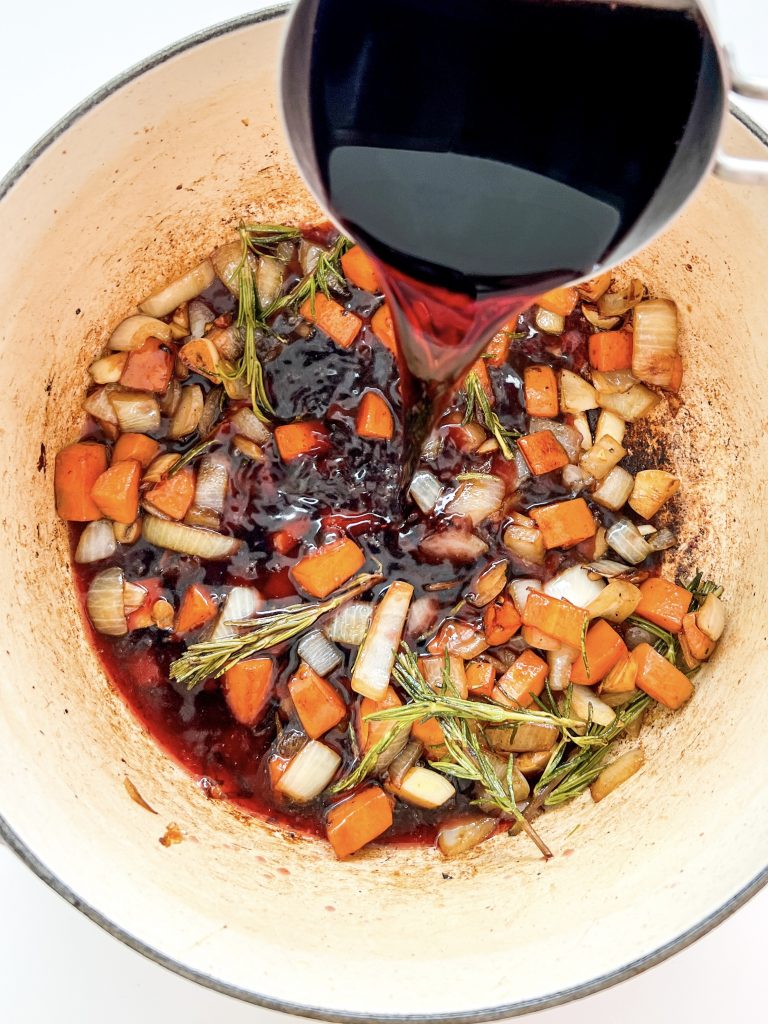
7 Add wine, reduce 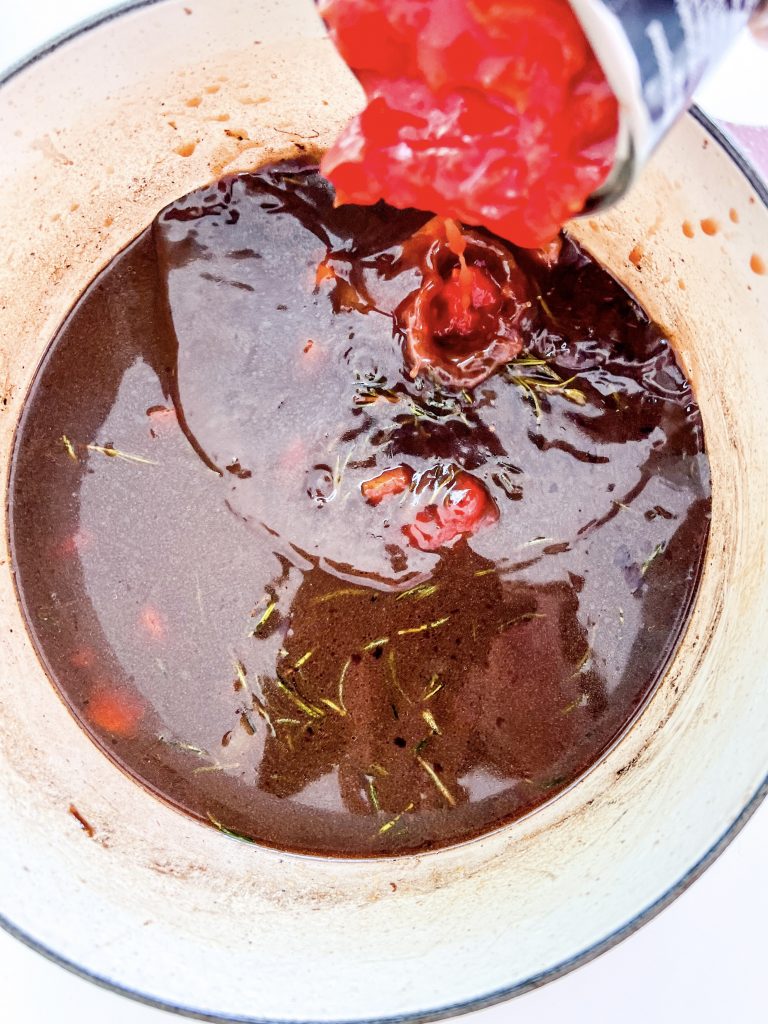
8 Stock, tomatoes, purée, vinegar 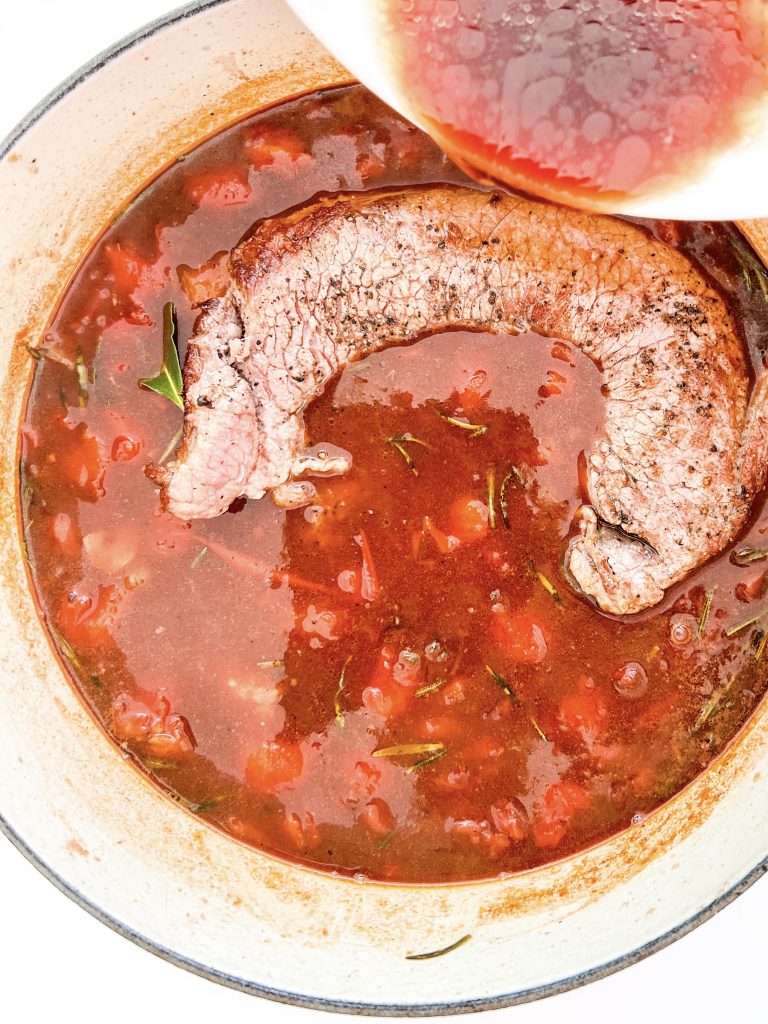
Add beef and jucies 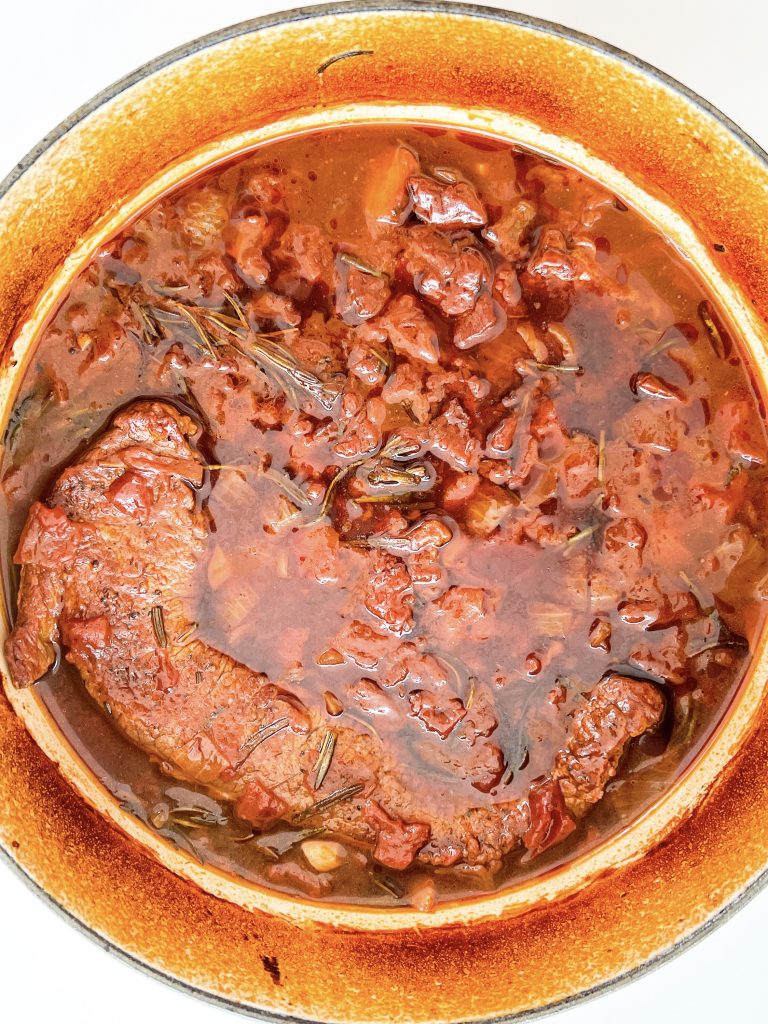
9 Cook in oven 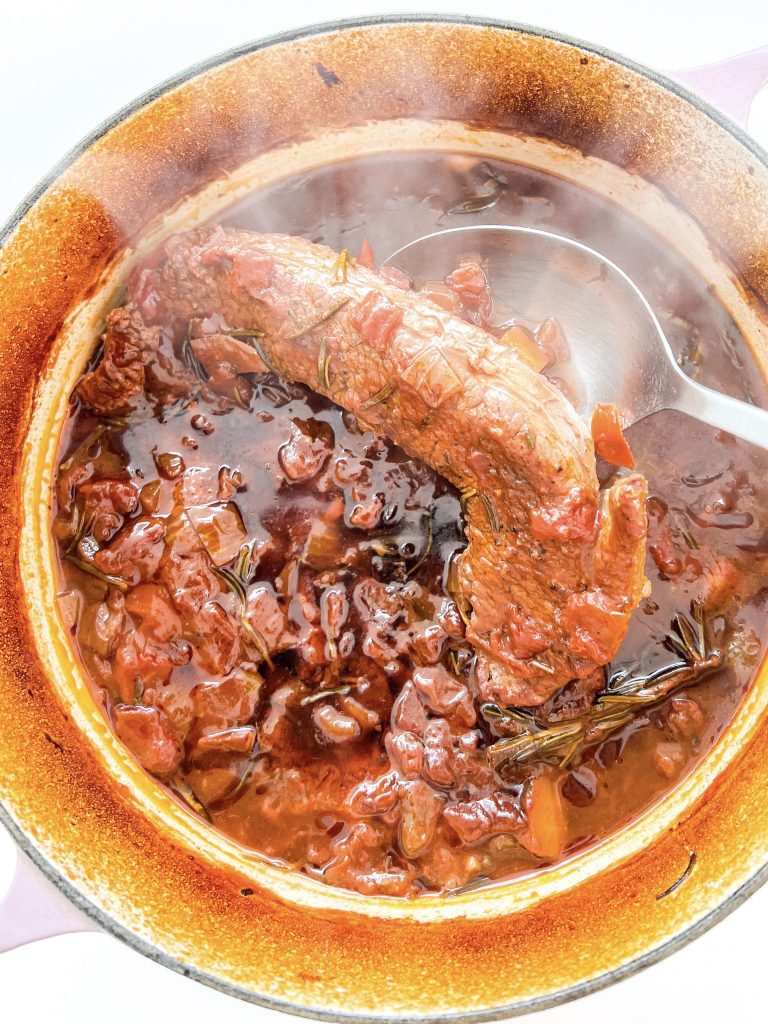
10 Remove beef 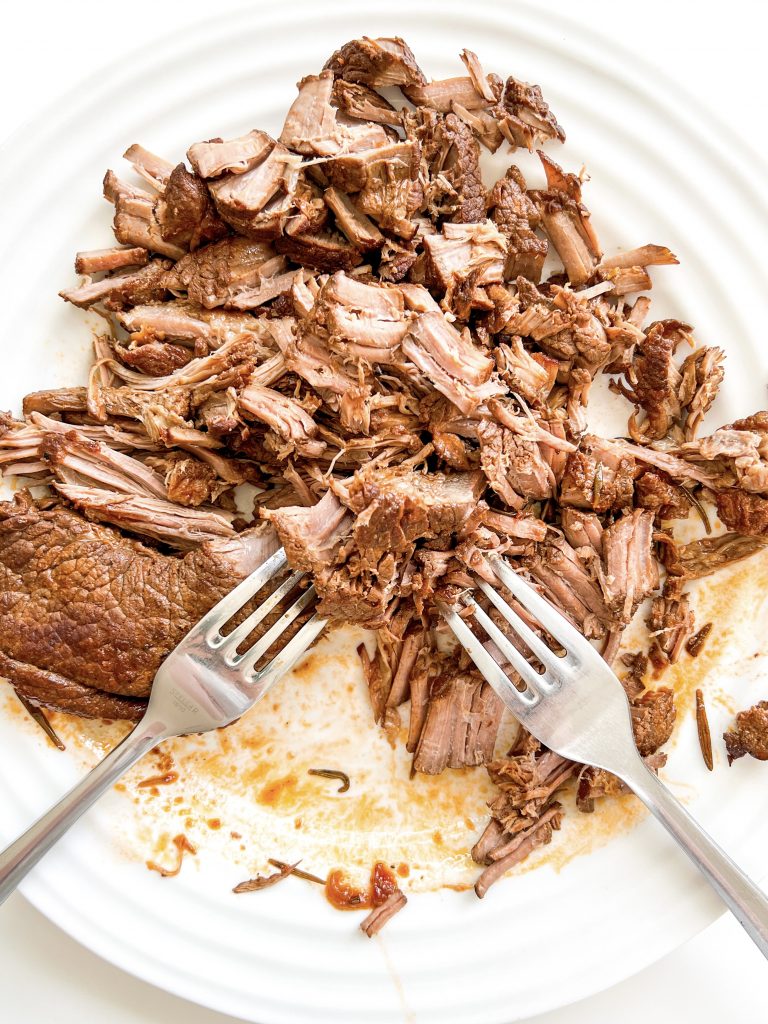
Shred beef 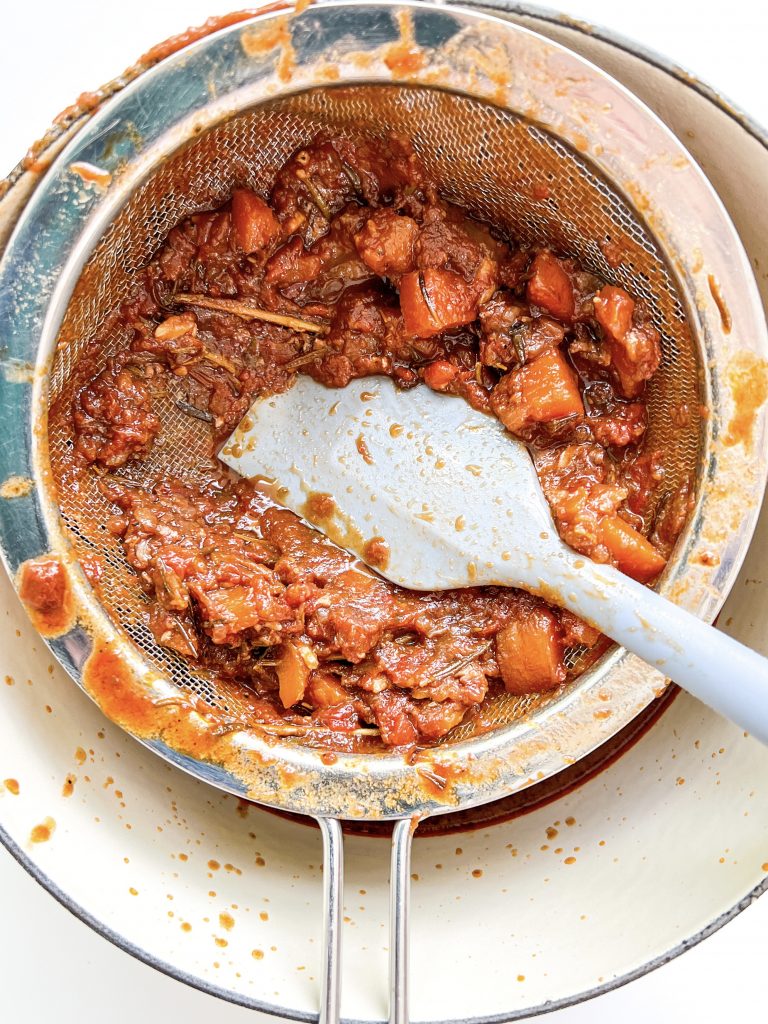
11 Strain 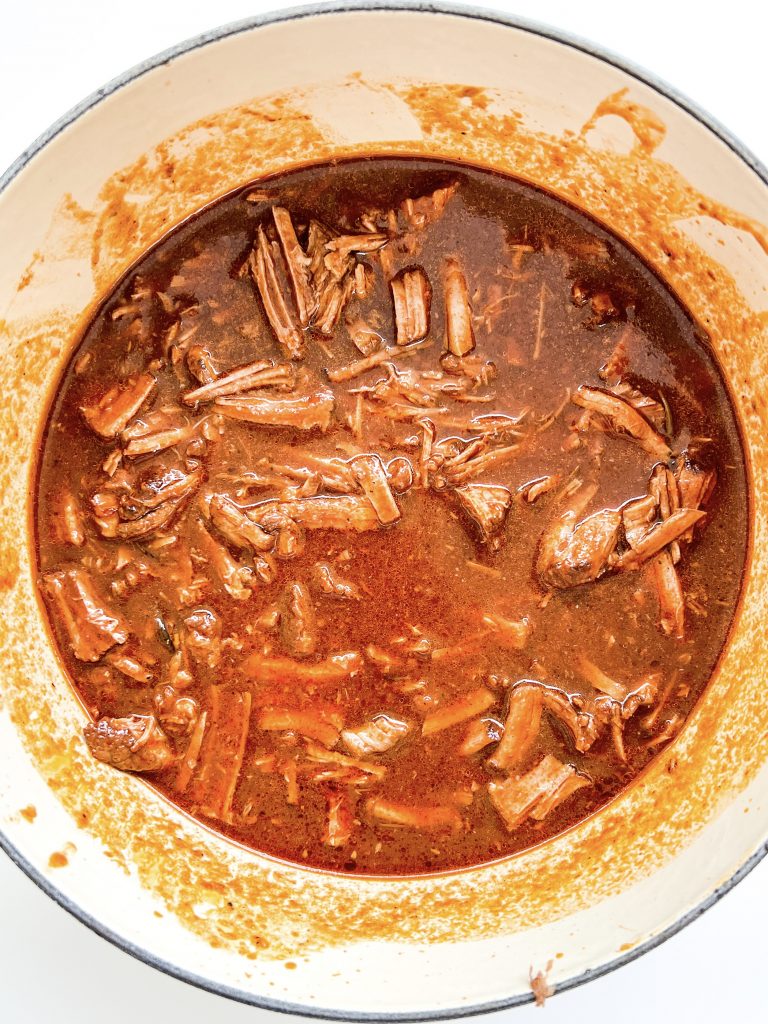
12 Reheat, serve
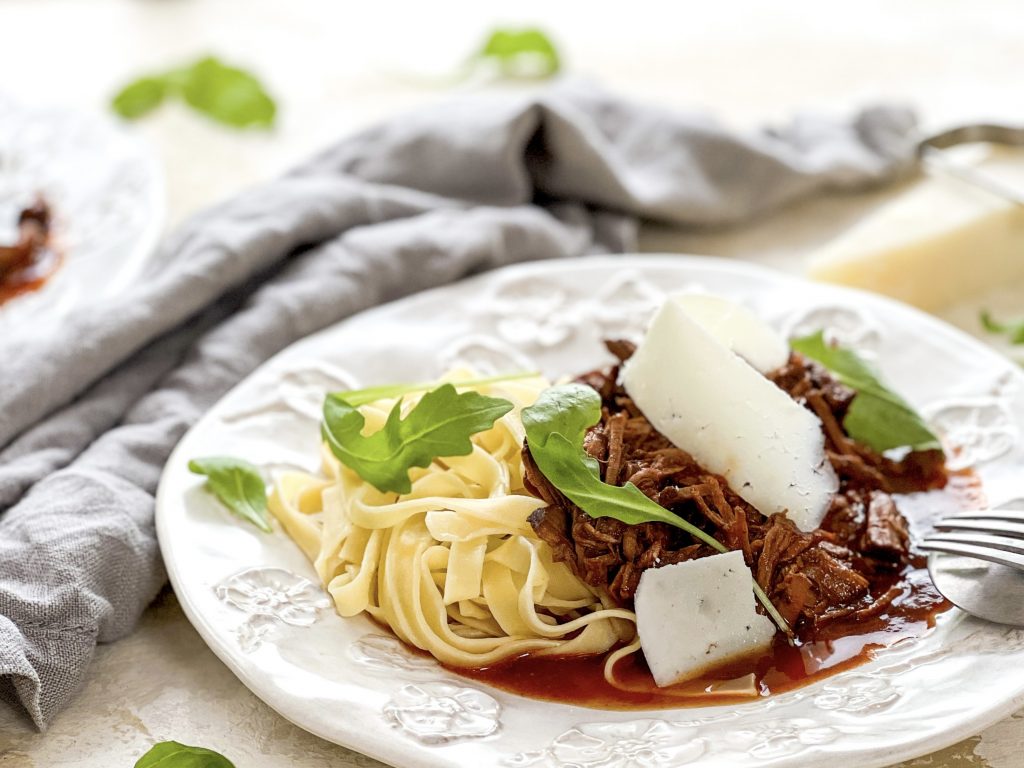
Made this recipe?
If you make this recipe, do please tag me on instagram @daffodil_kitchen. You could also leave a comment in the box directly below the recipe.
Beef Brisket Ragù
This ragù is made with beef brisket and is cooked over a long period of time to both tenderise the beef and intensify the flavour. I have been making this Donna Hay recipe for years: warm and comforting, and perfect if you want to prepare in advance, this fabulous pasta sauce is as ideal for a family meal, as it is for supper with friends.
Ingredients
For the ragù:
- 3 tablespoons olive oil
- 800g beef brisket, cut into 3 pieces
- 125g – 150g/1 onion – peeled and chopped
- 16g/4 garlic cloves – peeled and finely chopped
- 100g/1 carrot – washed, trimmed and chopped. No need to peel
- 4 sprigs rosemary
- 2 bay leaves
- 250ml/1 cup red wine
- 500ml/2 cups beef stock
- 1 x 400g tin chopped tomatoes
- ½ tin water from swilling out the tin from the tomatoes
- 1 tablespoon tomato purée
- 2 tablespoons red wine vinegar
- ½ – 1 teaspoon sugar, optional
- ½ – 1 teaspoon fine salt, or to taste
- ¼ – ½ teaspoon freshly ground black pepper
To serve:
- thick pasta e.g. rigatoni, pappardelle, tagliatelle or creamy polenta. Donna Hay recommends Caserecci – a rustic, rolled pasta
- fresh chopped rosemary, basil leaves or rocket leaves
- slivers/grated parmesan cheese
- green salad
- garlic bread/fresh bread
Instructions
-
Collect together your equipment (see Recipe Notes below) and ingredients.
-
Preheat oven to Fan Oven 130°C /150°C/300°F/Gas 2
-
Make the ragù – slice the brisket of beef into 3 pieces and season with salt and pepper on both sides of each piece.
-
Heat 1½ tablespoons oil in the casserole dish, over a moderate to high heat. Brown the beef on all sides. This will take 3 or 4 minutes on each side. (You may need to do this in batches.)
-
Remove the beef from the pan and set aside.
-
The base of your pan should be brown and caramelised. This should come off when you cook the vegetables and add the wine. It adds amazing flavour.
-
Prepare the vegetables:
– onion – peeled and chopped.
– carrot – washed, trimmed and chopped. No need to peel.
– garlic – peeled and roughly chopped.
-
Add the remaining 1½ tablespoons olive oil to the pan, together with the onion, garlic, carrot and rosemary. Cook for 5-10 minutes, stirring regularly, until softened, lightly browned and slightly caramelised. Scrape up and incorporate all the sticky bits left in the bottom of the pan.
-
Add the wine, bring to the boil and reduce to at least half, continuing to scrape up any sticky bits.
-
Add the stock, tomato purée, tin of tomatoes and red wine vinegar. Bring to a simmer and add the beef back to the pan. Make sure as much of it as possible is covered by the liquid.
-
Transfer to the oven and cook for 2½ – 3 hours, turning the beef half way through cooking. The beef should now be very tender.
-
Remove the beef from the pan and shred with two forks.
-
Meanwhile strain the sauce and taste to adjust seasoning. Skim off any fat which rises to the surface.
-
Return the beef to the pan and re-heat. If the sauce has too much liquid, simmer, with the lid off, to reduce until you get the consistency you are looking for.
-
Serve: with a thick pasta or some creamy polenta, and sprinkle with some fresh chopped rosemary, basil or rocket and parmesan cheese. Lovely with a side salad and fresh or garlic bread.
Recipe Notes
Equipment:
- kitchen scales and measuring spoons
- chopping board and knife
- cast iron casserole
- sieve or colander
You May Also Like
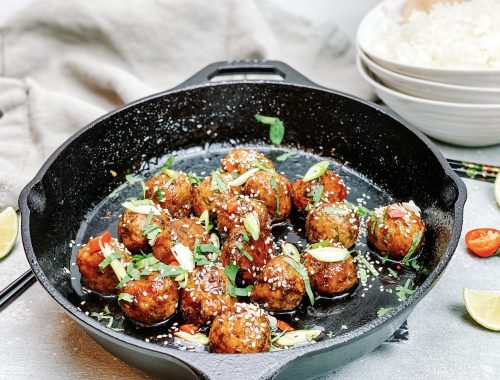
Crab and Chicken Meatballs with a Honey, Soy and Garlic Sauce with Chilli and Lime
19th February 2021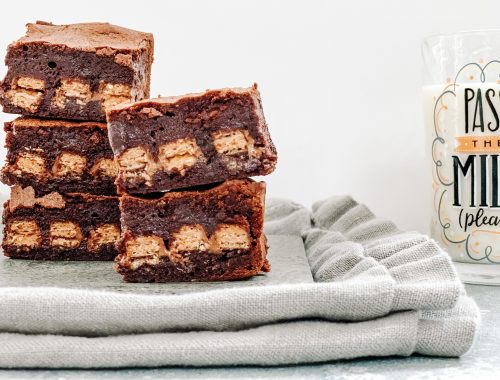
KitKat Brownies
7th March 2021
